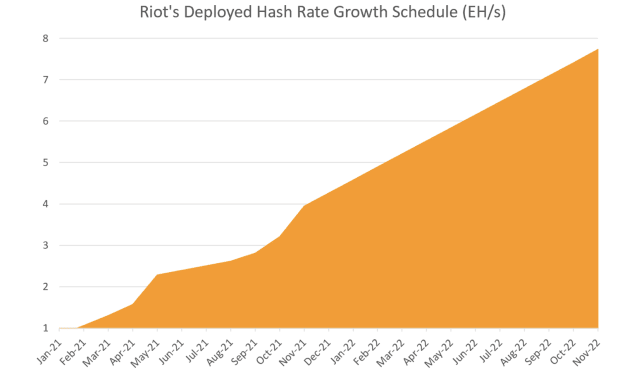How Does a Bitcoin Loan Work?
Bitcoin has shown itself among the best-performing assets in the last decade. In 2023, it outperformed the S&P 500, high-yield corporate bonds, and gold, soaring as much as 156 percent in a year.
Today, Bitcoin demand is reaching record highs as the approval of new spot Bitcoin ETFs has created a wave of institutional interest.
Although dubbed a risky and volatile asset, Bitcoin remains a profitable investment, especially for its earliest investors. When it was launched in 2009, it was practically worthless. In 2010, it traded at $0.10.
By 2013, it was hitting highs of $250—a 250,000 percent growth for early investors. Those who invested in 2017 would look at gains of over 6,700 percent in 2024 as the crypto asset briefly touched $70,000 recently.
With this kind of growth, it’s no wonder that investors view it as a long-term investment, preferring to “HODL” until it reaches new price highs.
However, any long-term BTC holder knows the path toward profitability isn’t always smooth sailing. Sometimes, you need to sell or take profits to sustain expenses or meet emergency cash needs.
As a result, you surrender part of your BTC holdings and reduce its long-term earning potential. Those intent on replenishing their Bitcoin also end up re-purchasing the asset at many times the price of the original buy.
What if there were another way to gain access to much-needed funds without selling your BTC? Bitcoin loans offer a solution that provides access to liquidity without letting go of your holdings.
How does a Bitcoin loan work? Here, we delve into the unique mechanics of a Bitcoin loan. We discuss how the world’s leading cryptocurrency is revolutionizing the world of finance beyond trading by providing alternative means to secure loans while retaining access to potentially higher returns in the future.

Understanding Bitcoin and Crypto Lending
Bitcoin loans are a form of crypto lending. Crypto lending platforms allow BTC investors to borrow against their deposited assets. They can also lend out their BTC holdings to earn interest in crypto rewards. In 2020, crypto lending platforms began gaining significant traction. They have since expanded to hold billions in total value locked (TVL) across several platforms.
You can divide crypto lending into two components. Crypto or BTC deposits that earn interest and crypto loans. Deposit accounts on such platforms behave like regular bank accounts. You can deposit BTC and earn interest. The platform can use the deposited funds to lend to borrowers or for other investments—similar to how a bank operates.
Typically, crypto loans are offered as collateralized lending products. They require users to deposit a 100 percent minimum to access the loan. Some require up to 150 percent—thus becoming overcollateralized loans.
How To Secure a Bitcoin Loan
A Bitcoin or Bitcoin-backed loan is a US dollar loan that BTC collateralizes. To secure this type of loan, you send BTC to a lending platform as collateral. In return, you receive a loan in stablecoin or US dollars.
The mechanics of Bitcoin-backed loans are similar to traditional secured loans, except BTC is the collateral. Such loans eliminate the need for extensive credit checks. The steps include account creation, brief onboarding, key upload, and loan application submission. In decentralized platforms, the process could be even more straightforward.
Once your BTC deposit is confirmed on the blockchain, US dollars or an equivalent in stablecoin is sent to your bank account or crypto wallet. The interest on the loan is paid in regular intervals. For example, interest payments could be due every 30 days and will go on until the loan matures. The final interest payment and the principal amount will be due upon maturity.
The amount you receive is based on the value of your BTC holdings and the platform’s LTV (loan-to-value) ratio. The LTV ratio is determined based on risk factors associated with the crypto market’s volatility. Should the value of Bitcoin drop, the platform may require you to add more collateral to equalize the borrowed amount. If you don’t add collateral, you risk liquidating your BTC holdings.
Factors To Consider When Applying for a Bitcoin-backed Loan
Bitcoin loans are not risk-free. While they offer many benefits, consider the following before deciding to lend out your BTC holdings:
Risks associated with rehypothecation
Some Bitcoin lenders mimic the processes of banks, which means your deposited BTC may be subject to rehypothecation. Rehypothecation is the process of lending out client assets posted as collateral.
Thus, the BTC is put at risk. The lending platform, in turn, earns interest by utilizing your digital assets for various purposes, including re-lending. Some Bitcoin-backed loan providers lend clients’ Bitcoin to third parties.
With rehypothecation, the loan provider earns interest from both the borrower’s interest payments and the proceeds of lending the BTC collateral to other parties. The lender passes a portion of the interest to the borrower of US dollars through a marginally lower interest rate. However, some of the borrower’s collateral—or even 100 percent—is at risk.
Borrowers are unaware of the counterparty risk surrounding BTC-backed loans. Their holdings are exposed to multiple layers of counterparty risk. Lenders who rehypothecated collateral, therefore, expose borrowers to risk when either party becomes insolvent.
Thankfully, some BTC loan providers do not rehypothecate. It is up to the user or client to select the features of a lending platform and decide how much risk they can take on.
Annual percentage rate (APR)
The annual percentage rate, also known as the APR, is the yearly interest rate generated by a sum charged to borrowers or paid to investors. The APR is a percentage representing the annual cost of funds over a loan term or an investment’s earned income.
In other words, it annualizes the total cost of a loan. The value includes additional costs or fees associated with the transaction. APR does not factor in compounding.
The APR provides platform users a bottom-line number to compare investment products and lenders. Some lending companies offer low interest rates but charge high origination fees. This feature will cause the APR to increase significantly. A higher APR means it is more expensive for the borrower when multiple loans originate in a single year.
A short-term loan will promise low interest rates. However, you need to check the origination fee. It will be cheaper to take out a twelve-month loan at a slightly higher interest rate with a one-time origination fee than getting a three-month loan with a 1 percent origination fee and renewing it.
LTV requirement
The LTV or loan-to-value requirement must be considered when you take out a Bitcoin-backed loan. For example, a 40 percent LTV means a $10,000 loan will require $25,000 worth of BTC as collateral. The ratio aims to prevent collateral liquidations as the market price fluctuates.
Some lenders offer low interest rates and lower LTV ratios. A lower LTV ratio could range from 20 to 30 percent. Therefore, the clients must deposit more BTC to access the loan. This practice is done to have the ability to lend out or rehypothecate the collateral to others. Another reason for a low LTV is that higher collateral means less risk when they lend.
Collateral to principal (CTP) vs. loan to value (LTV)
The CTP, or collateral-to-principal ratio, is the LTV’s inverse value. For example, an LTV at 40 percent equates to a CTP of 250 percent. CTP helps users understand the current status of their collateral ratio. This value is instrumental when the BTC price drops.
Tax implications
Tax legislation around Bitcoin loans is still evolving. It is crucial to consult a tax professional about your possible tax obligations, even if it is reasonable to expect BTC-backed loans to be treated analogously to traditional lending practices by the IRS.
The IRS declared in 2014 that virtual currencies be treated as property when it comes to tax treatment.
Therefore, they trigger capital gains taxes when sold. Borrowing against Bitcoin or crypto, however, would not trigger those taxes.
Nonetheless, consulting a tax expert regarding current and future tax issues with Bitcoin loans is best.

What are the benefits of Bitcoin loans?
Bitcoin-backed loans offer several advantages, especially for long-term holders. The most obvious benefit is access to liquidity without the need to sell off BTC holdings. Bitcoin loans preserve your digital asset holdings. They also save you capital gains tax as a result of not selling.

Moreover, BTC loans tend to offer a higher level of privacy versus those from traditional financial institutions. They don’t typically require extensive credit checks and disclosure of extensive personal information. To secure a Bitcoin loan, you will only disclose minimal information for identity verification.
Another benefit of Bitcoin loans is speed. Some Bitcoin-collateralized loans can be obtained within days, hours, or even minutes.
Bitcoin Loans: An Alternative To Selling Your Bitcoin
Owning Bitcoin offers many advantages, including generating significant growth in your investment and having a scarce asset that doubles as a decentralized mode of payment.
Hence, holders understandably think twice about selling BTC to fund urgent expenses in US dollars. However, we all need to take care of our financial needs.
Bitcoin-backed loans bridge the gap between owning a profitable investment with high growth potential and temporarily meeting fiat-based expenses. Several platforms offer Bitcoin-backed loans with varying features and requirements. You must evaluate the pros and cons of each platform and use the ones that balance risk with the most significant financial benefits.
As you hold your Bitcoin long-term, you can explore novel products and services that protect your wealth as they offer an avenue to meet financial needs, invest in other assets, and take advantage of business opportunities.
This is a guest post by Ivan Serrano. Opinions expressed are entirely their own and do not necessarily reflect those of BTC Inc or Bitcoin Magazine.









